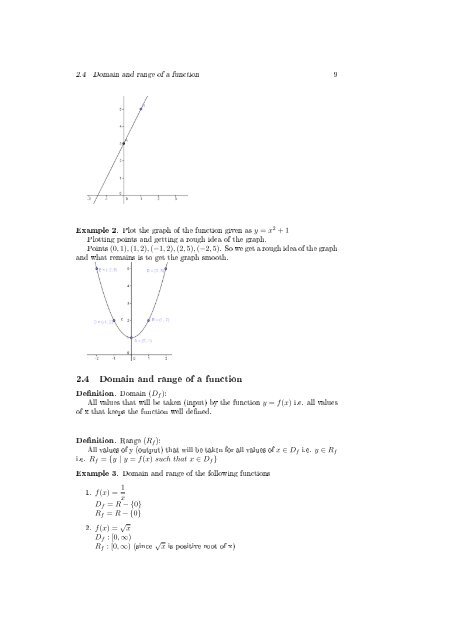Denition approach of learning new topics
You also want an ePaper? Increase the reach of your titles
YUMPU automatically turns print PDFs into web optimized ePapers that Google loves.
2.4 Domain and range <strong>of</strong> a function 9<br />
Example 2. Plot the graph <strong>of</strong> the function given as y = x 2 + 1<br />
Plotting points and getting a rough idea <strong>of</strong> the graph.<br />
Points (0, 1), (1, 2), (−1, 2), (2, 5), (−2, 5). So we get a rough idea <strong>of</strong> the graph<br />
and what remains is to get the graph smooth.<br />
2.4 Domain and range <strong>of</strong> a function<br />
<strong>Denition</strong>. Domain (D f ):<br />
All values that will be taken (input) by the function y = f(x) i.e. all values<br />
<strong>of</strong> x that keeps the function well dened.<br />
<strong>Denition</strong>. Range (R f ):<br />
All values <strong>of</strong> y (output) that will be taken for all values <strong>of</strong> x ∈ D f i.e. y ∈ R f<br />
i.e. R f = {y | y = f(x) such that x ∈ D f }<br />
Example 3. Domain and range <strong>of</strong> the following functions<br />
1. f(x) = 1 x<br />
D f = R − {0}<br />
R f = R − {0}<br />
2. f(x) = √ x<br />
D f : [0, ∞)<br />
R f : [0, ∞) (since √ x is positive root <strong>of</strong> x)



